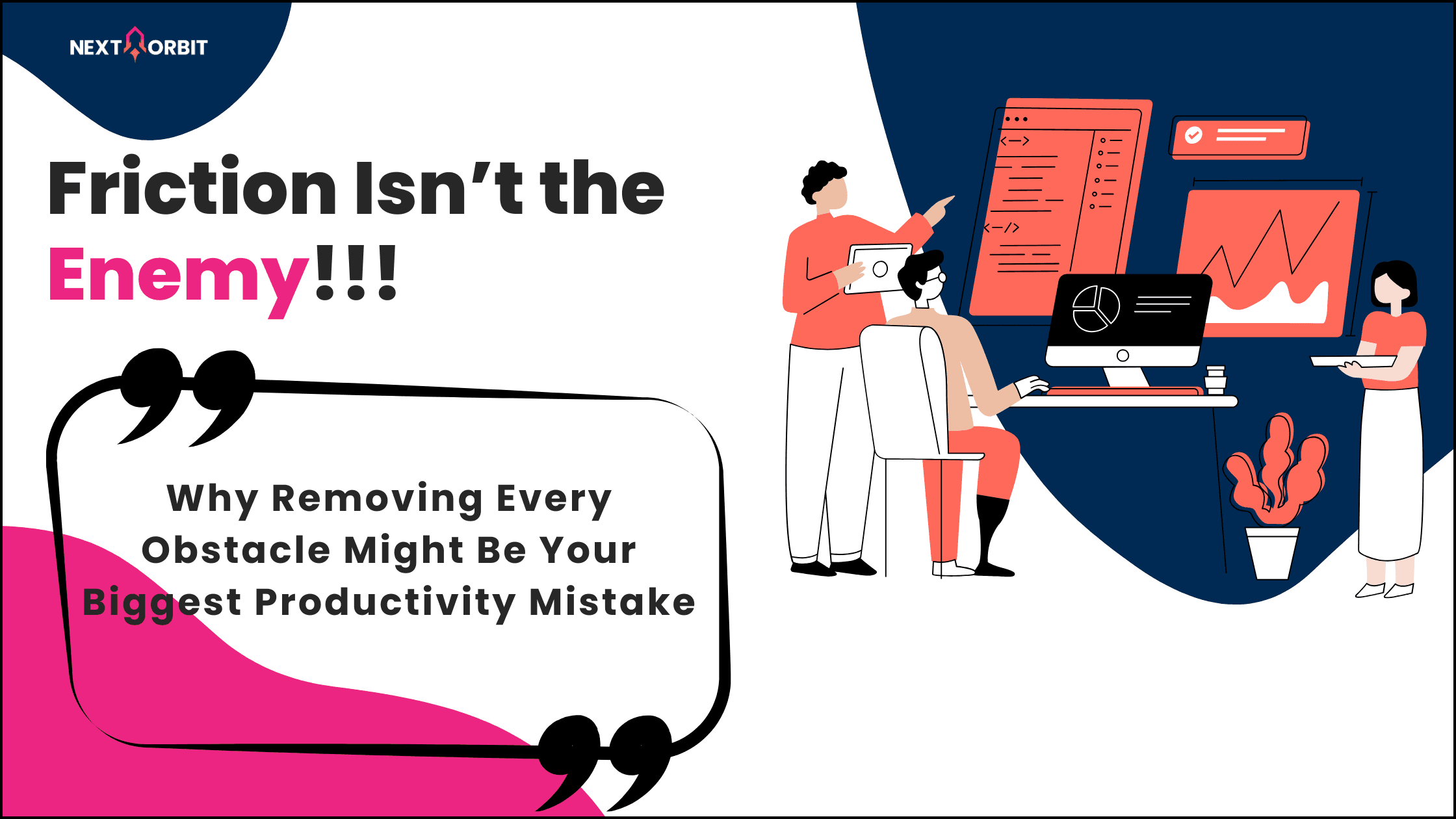Imagine a world where a developer walks into their workplace, gets quick access to the system, turns on their machine, and immediately switches into the work zone – writing code, solving problems, building the future.
No waiting, no delays, no permission walls. Just quick and easy access to the workspace.
Sounds fascinating. Is it just a dream? In reality, for most developers at large enterprise companies, it takes days to get access to the system. Think about it. A developer, full of ideas and intention, sits down to tackle their task, only to find that they don’t have the required access.
Approvals are pending.
Systems are locked.
And suddenly, their brain, which had been orbiting in full problem-solving mode, is forced to switch contexts. Again. And again. And again.
This isn’t just annoying. It’s cognitively expensive.
Welcome to one of the most fascinating paradoxes in modern work design.
The Biggest Misconception – Smooth as Silk Equals Success
What most people believe is that the smoother the system, the better the results. Remove all fiction, eliminate every bump, and create a perfectly fictionless workflow; voilà – productivity paradise.
But hold on. What if I told you this seemingly logical assumption is not just wrong, but dangerously wrong? What if the pursuit of perfect smoothness is sabotaging the very productivity we’re trying to enhance?
The Reality of Friction
Here’s a harsh truth: The right amount of friction is not your enemy. It’s your secret weapon. Understand this with an example, imagine you’re driving a car with zero friction. Sounds amazing, right? You’re riding effortlessly down the road. Except, you’d also have no steering control, no ability to stop, and you’re career would wildly off the road at the first curve. That ‘fictionless’ car turns into a disaster machine in a second.
The same principle applies to workspace systems. A completely fictional system often means zero oversight, no control gates, and no meaningful checkpoints. It’s like giving someone the keys to the nuclear reactor with a sticky note that says, “Have fun!”
Workspace, Reimagined
So, how do we fix this?
How do we create systems that are smooth, fast, and intelligently controlled?
Enter the fascinating world of Work Architecture Design – a good mix of engineering, psychology, and a sprinkle of design thinking.
The Three Pillars of Productivity Paradise
Pillar 1 – Understanding the Current Reality
Before you architect the future, you need to observe the present. What’s the actual problem developers face when trying to work? You observe how they work, how they struggle, what slows them down.
Pillar 2 – The Bridge of Dreams
This is where design thinking becomes your superpower. You connect with people who do work, and as a team, you ideate, synthesize, and prototype future workspace.
Pillar 3 – The Infrastructure Magic
Here’s where the actual magic works. Whether it’s serverless computing, virtual machines, networks, databases, or cloud orchestration, this is the technological foundation that transforms your dream into a working reality.
The Catalyst vs. Exertion Force Framework
Imagine your workflow as a river. Now there will be two types of forces, the first one pushing your work forward (catalysts) and the second one holding the forces back (inhibitors). Now the real art is to maintain a perfect balance here.
Catalyst Forces: These are your productivity accelerators. Automated approvals, instant system access, seamless tool integration that anticipates needs before you even know you have them.
Controlled Friction Forces: Consider these as your guardrails. Policy enforcement, audit trails, smart gates, security checkpoints, etc. These essential controls keep your speeding productivity train on the tracks.
The Role of AI
We are living in the age of AI. Here, AI is the accelerator. It amplifies everything. Carefully architected systems become more powerful when enhanced with artificial intelligence. It makes automation easier, speeds up decision-making, and clears the runway for creativity to take off faster. And not just faster, but also smarter.
The Future is Now
The future of work isn’t about choosing between speed and control, between innovation and security, flexibility and structure. The future of work is about creating a sophisticated system that can deliver all the seemingly contradictory benefits simultaneously.
When done right, work architecture creates a magical structure where a developer sits at a desk, and there’s no waiting time for approvals. The system becomes invisible, frictionless where it needs to be, protective enough where it must be, and intelligent everywhere it can be.
So the next time someone suggests the solution to the productivity problem is simply “removing all friction,” you can smile knowingly. You understand the deeper truth: the most powerful systems aren’t frictionless, they’re thoughtfully friction-optimized.

